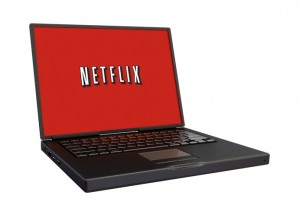Having already blown a hole in the pay-TV market with its cut-price streaming services, US video streaming player Netflix is now tearing down the long-standing telecom wholesale model because of the huge traffic volumes its services are generating.
July 1, 2013

By Julio Puschel
Having already blown a hole in the pay-TV market with its cut-price streaming services, US video streaming player Netflix is now tearing down the long-standing telecom wholesale model because of the huge traffic volumes its services are generating.
The peering model, which is normally an agreement between bandwidth providers to send and receive traffic in different locations/data centres, is under attack as video traffic increase is unbalancing the traditional model – with Netflix a key driver of the growth imbalance.
Informa Telecoms & Media estimate that video will generate traffic around 133 Exabyte in 2012, growing to more 914 Exabyte in 2017, which will represent 92% of CDN-delivered Web traffic. Therefore, the volume of video trafficking through the various world Internet Exchange Points (IXPs) is making peering agreements to become unbalanced.
Netflix’s getting resistance from some operators (most notably Comcast and Time Warner) is not new as some players are sceptical about future peer opportunities if entering on Netflix’s Open Connect. Once becoming part of Open Connect, it would be a huge challenge to establish (and maybe monetize) a peering agreement with Netflix in the future.
But now the “conflict” is scaling up when the second biggest US carrier, Verizon, start to have its clients’ experience affected by the enormous traffic created by Netflix at Cogent Communications, one of the largest bandwidth providers, and which Verizon has peering agreements.
The frustration of the telcos is exacerbated by the fact that Netflix – now armed with 30 million subscribers in the US – is seriously encroaching on the telcos and MSO’s own pay TV operations.
The Netflix/Verizon situation raises even more question about the internet peering model and whether these agreements will still be based on reciprocity, or if internet companies will need to start to pay for peering for some of their services. If video is demanding more capacity and consequently more investment, it would be difficult to convince operators to pay for the entire bill. Operators will need to start monetizing some of these peering agreements (including QoS and privacy/security as additional value proposition) or internet companies will need to promote and invest in order to increase the number of IXPs.
Additionally, with more video being delivered in HD, quality becomes a differentiator not only for the operator, but also to the OTT player. The free internet model will be limited and quality will have a premium price, the big question is whether operators like Netflix – already operating on razor thin margins – would be prepared to pay telcos or MSO’s for guaranteed quality of service delivery.
Informa Telecoms & Media has conducted an extensive research on this topic which is covered in our “Future of Internet” and “CDN future scenarios” research. In these researches, we tackle the different business models and initiatives as well estimating the total potential market for CDN, including both pure players and operators.
Read more about:
DiscussionYou May Also Like






.png?width=300&auto=webp&quality=80&disable=upscale)


_1.jpg?width=300&auto=webp&quality=80&disable=upscale)


.png?width=800&auto=webp&quality=80&disable=upscale)